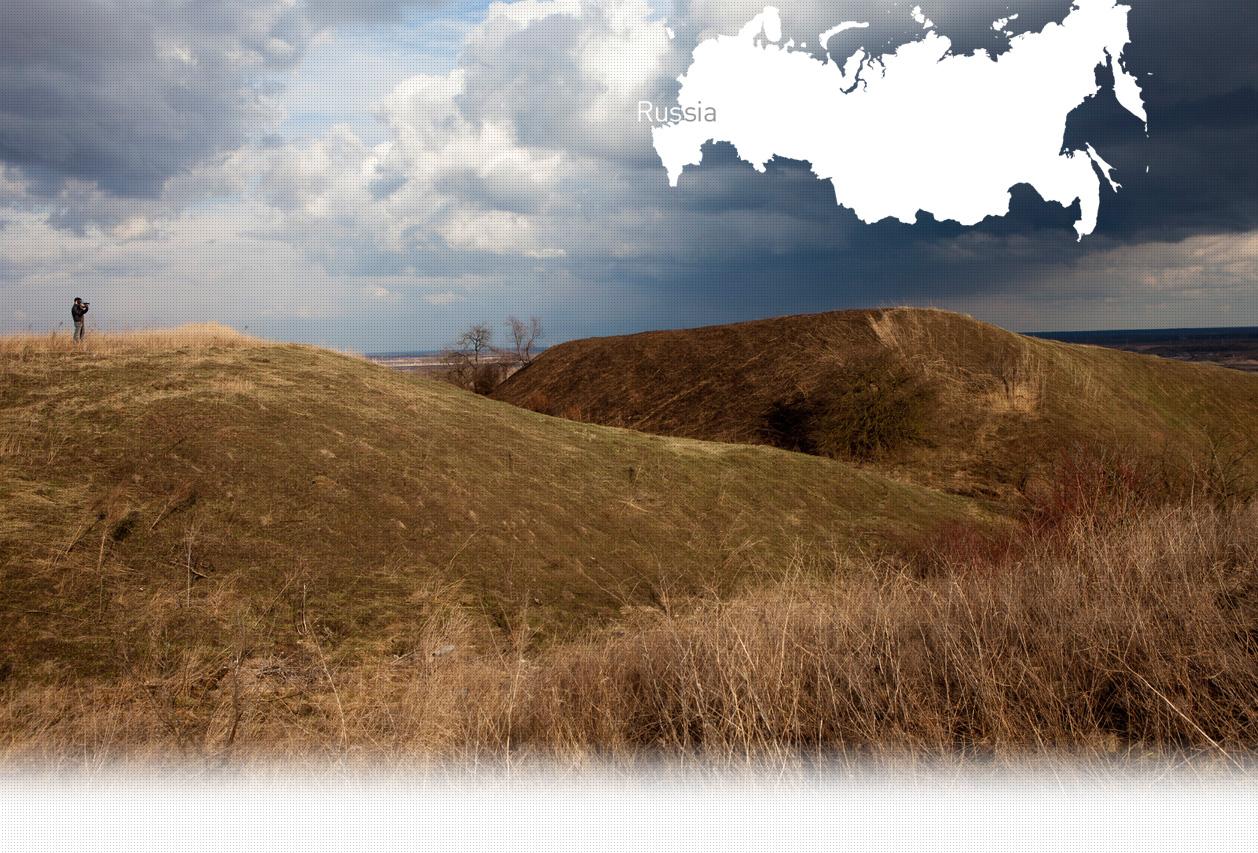

1 Killing site(s)
Maria A., born in 1926, worked in the kolkhoz [collective farm] office before the occupation.
Y.U. : What happened to the Jews afterwards ?
W: In the office we knew already that they were going to be killed. In the village of Martynovka, the lists had already been prepared. Our policeman, Boldyrev, told them that they would be killed and wondered why they [the Jews] were not fleeing. But, the Jews didn’t believe him and stayed here. Although, some of them left because in the beginning there were 13 families. […]
Y.U. : And what happened after ? Did someone come to gather them?
W : You mean before the shooting ?
Translator : Yes. How did everything happen?
W: They were gathered. At this moment I was at the office and we watched them passing by from the office. Masha [the Jewish refugee] was walking barefoot. Someone must have denounced them. […] They were all gathered by the SS men, -they wore the SS uniform, and marched [them] to the execution site. After the execution they [the SS men] came to the Vitkin’s house, our neighbor, and had a meal there. They made them cook something to eat.
Y.U.: Did they eat inside or outside the house?
W: They ate outside. It was in summer. A table was put outside for them. There were about five or six SS men and two policemen, including Boldyrev. But Boldyrev didn’t shoot; he refused to shoot, although another one did.
Y.U.: Did they drink as well?
W: Yes, they drank and sang. It was just across from our house.” (Witness n°860, interviewed in Salski Kagalnik, on November 14, 2018)
« In November the German invaders occupied our hamlet [Salski Kagalnik] and shot civilians evacuated here from different regions.” [The list of twelve names follows].” [Act n°69 drawn up by Soviet State Extraordinary Commission, on February 12, 1943; GARF : Fond 7021, opis 40, delo 5]
Salski Kagalnik is a hamlet located about 150km (93mi) east of Rostov-on Don. Before the war there were no Jews living in the hamlet. It was home to Russians and Ukrainians whose main occupation was agriculture.
Salski Kagalnik was occupied by Germans on July 31, 1942. By this time many Jewish and non-Jewish refugees arrived and settled down in the village. From the accounts of Maria A., born in 1926, who used to work at the kolkhoz office and registered refugees, in all sixty Jews were given refuge in the village by the local Soviet authorities. Among them there were Roza, with her daughter Masha Schneider, born in 1921, and sons Gleb and Vladimir. They worked with Nadia, Maria’s younger sister, in the kolkhoz. Thirty‐eight Jews succeeded in evacuating before the arrival of the German army. The remaining twenty two Jews were shot as soon as the Germans arrived. In archives of the Soviet Extraordinary Commission, there is just a single line saying that twelve Jewish refugees were killed in Salski Kagalnik. According to the archives, the shooting took place in November, but the witnesses interviewed by Yahad confirmed it happened in the summer of 1942, shortly after the Germans’ arrival. The remaining Jews were gathered near the kolkhoz office and then were marched to the ravine where they were shot. The shooting was conducted by several SS men accompanied by local policemen. Before the execution, the Germans brought food and ordered dinner. After the shooting, they ate, drank, sang and laughed.
Do you have additional information regarding a village that you would like to share with Yahad ?
Please contact us at contact@yahadinunum.org
or by calling Yahad – In Unum at +33 (0) 1 53 20 13 17